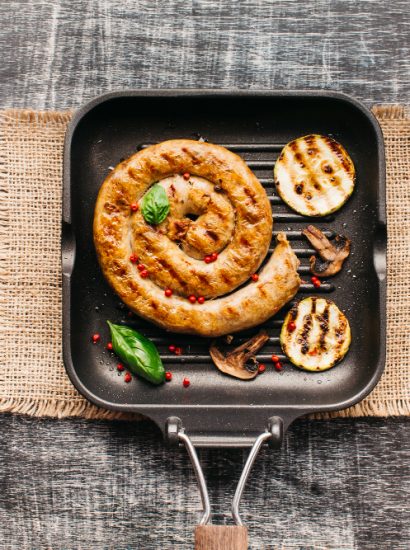The phrase how are you in Dutch is more than just a translation. It’s about connecting with people and showing interest in their well-being. In Dutch, there are several ways to ask this depending on the level of formality or familiarity. From casual conversations with friends to formal discussions with colleagues, knowing how to navigate this aspect of the language is key.
Below, you will find the top 10 ways to ask how you are in Dutch that can be used in various situations. By learning these phrases, you’ll have the right tools to engage confidently with Dutch speakers.
How Are You in Dutch – Hoe gaat het met je? (Informal)
The most direct translation of how are you in Dutch is “Hoe gaat het met je?” This informal phrase is suitable for casual conversations with friends, peers, or family members. It’s equivalent to the English “How’s it going?” and helps you start a friendly dialogue.
Pronunciation: “hoo haat het met yuh?”
This phrase uses the informal “je” for “you,” making it ideal for familiar settings.
How Are You in Dutch – Hoe gaat het met u? (Formal)
When speaking with someone in a formal setting, such as a colleague or elder, the correct way to say how you are in Dutch is “Hoe gaat het met u?” The formal “u” adds a layer of respect and is commonly used in business or professional environments.
Pronunciation: “hoo haat het met oo?”
This is the go-to phrase when you need to maintain formality and politeness.
How Are You in Dutch – Hoe is het?
A shorter and more casual version of how are you in Dutch is “Hoe is het?” It translates to “How’s it going?” and is often used in informal, everyday conversations. This phrase is great for catching up with friends or acquaintances.
Pronunciation: “hoo is het?”
It’s perfect for lighthearted interactions when you want to keep the conversation relaxed.
How Are You in Dutch – Alles goed?
Another common way to ask how are you in Dutch is “Alles goed?” which means “Everything good?” This phrase is widely used in informal settings and can be compared to saying “Is everything okay?” in English.
Pronunciation: “all-es koot”
It’s an easy way to start a casual conversation when meeting someone in a friendly context.
Hoe maak je het? – How are you doing?
“Hoe maak je het?” is a less commonly used phrase but still important for informal contexts. It translates to “How are you making it?” and can be used with friends and family.
Pronunciation: “hoo maak yuh het?”
This phrase provides some variety in casual conversations, showing a deeper interest in the other person’s well-being.
Hoe gaat het ermee? – How’s it going with that?
Deze phrase is een variatie van “Hoe gaat het met je?” and focuses on asking how things are going with a specific situation. It’s useful for follow-up conversations.
Pronunciation: “hoo haat het er-my?”
It shows attentiveness to ongoing matters and is useful in both casual and professional settings.
Wat is er aan de hand? – What’s going on?
If you sense something is wrong, “Wat is er aan de hand?” is a good way to ask “What’s going on?” It expresses concern and can be used to inquire about someone’s situation.
Pronunciation: “wat is er aan de hand?”
This phrase is useful when you need to check in on someone who seems troubled or upset.
Hoe voelt u zich? – How are you feeling? (Formal)
For formal situations or when addressing an elder, “Hoe voelt u zich?” is a more polite way to ask how someone is feeling. This phrase is particularly useful in professional or medical settings.
Pronunciation: “hoo voolt oo zikh?”
This formal phrase adds an extra layer of politeness and care.
Hoe gaat het vandaag? – How are you today?
When you want to ask specifically about someone’s day, “Hoe gaat het vandaag?” translates to “How are you today?” It’s a great way to show interest in how someone is feeling in the present moment.
Pronunciation: “hoo haat het van-dag?”
This phrase is perfect for checking in on someone’s daily well-being.
Alles oké? – Everything okay?
Finally, “Alles oké?” is another casual, easy-to-use phrase that means “Everything okay?” It’s a quick check-in to see if everything is alright and works well in informal settings.
Pronunciation: “all-es oh-kay?”
This phrase can be used when you want to keep the conversation light but still show interest in someone’s well-being.
Conclusion
By learning these phrases, you’ll not only master how to say how you are in Dutch but also gain insight into the culture and communication styles of Dutch speakers. Whether you’re having casual conversations or more formal interactions, these phrases will serve you well. Practice using them in different contexts to build confidence and fluency in your Dutch language journey.
FAQs
1. What’s the difference between “Hoe gaat het met je?” and “Hoe gaat het met u?”?
The phrase “Hoe gaat het met je?” is informal and used with friends or peers, while “Hoe gaat het met u?” is formal and used with elders or in professional situations.
2. Is there a casual way to ask how you are in Dutch?
Yes, a casual way to ask how you are in Dutch is “Hoe is het?” or “Alles goed?”, which are common in everyday conversations.
3. What is the formal way to say how are you in Dutch?
The formal way to ask how you are in Dutch is “Hoe gaat het met u?” which is typically used in professional or respectful contexts.
4. Can I use “Alles goed?” instead of how are you in Dutch?
Yes, “Alles goed?” is a casual equivalent of how are you in Dutch and is commonly used among friends or in informal situations.
5. How do you respond when someone asks how are you in Dutch?
When someone asks how you are in Dutch, you can reply with “Goed, dank je” (Good, thank you) or “Niet slecht” (Not bad), depending on how you feel.
Also read: Vuitton Travel Bag: 10 Celebrity Styles You’ll Want to Copy









